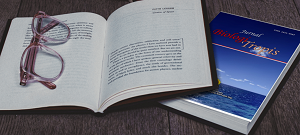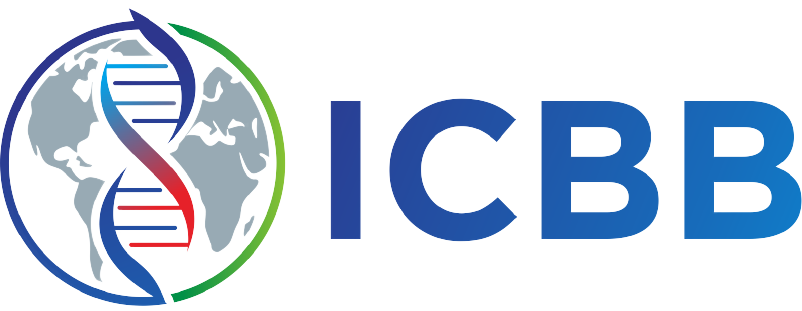Isolation and Characterization of Cellulolytic Bacteria from Mangrove Leaf Litter in Bale Mangrove Ecosystem
Authors
Fitri Aulia , Agil Al Idrus , Ayu Citra RasmiDOI:
10.29303/jbt.v25i3.9940Published:
2025-08-23Issue:
Vol. 25 No. 3 (2025): Juli-SeptemberKeywords:
Bacteria, Biodegradation, Cellulase activity, Mangrove, Microbial diversityArticles
Downloads
How to Cite
Downloads
Metrics
Abstract
This study aimed to isolate and characterize cellulolytic bacteria from mangrove leaf litter in the Bale Mangrove ecosystem, East Lombok. A descriptive-explorative method was employed involving serial dilution, CMC agar culture, morphological and biochemical identification, Gram staining, and qualitative cellulase activity testing using Congo red. A total of 15 bacterial isolates were obtained and analyzed. All isolates were Gram-positive, predominantly rod-shaped (bacilli), and exhibited varied colony morphologies. Biochemical tests revealed diverse metabolic capabilities, and seven isolates demonstrated cellulolytic activity, with isolate P2.2 showing the highest cellulolytic index (IS = 3.78). The findings indicate the presence of highly active cellulolytic bacteria in local mangrove litter with potential roles in natural cellulose degradation. This research confirms the ecological relevance of local microbial diversity and suggests further exploration of their enzymatic potential for biotechnology and environmental management.
References
Allard, S., Costa, M., Bulseco, A., Helfer, V., Wilkins, L., Hassenrück, C., Zengler, K., Zimmer, M., Erazo, N., Rodrigues, J., Duke, N., Melo, V., Vanwonterghem, I., Junca, H., Makonde, H., Jiménez, D., Tavares, T., Fusi, M., Daffonchio, D., Duarte, C., Peixoto, R., Rosado, A., Gilbert, J., & Bowman, J. (2020). Introducing the Mangrove Microbiome Initiative: Identifying Microbial Research Priorities and Approaches To Better Understand, Protect, and Rehabilitate Mangrove Ecosystems. mSystems, 5. https://doi.org/10.1128/mSystems.00658-20.
An, H., Ching, X., Cheah, W., Lim, W., Ee, K., Chong, C., & Lam, M. (2024). Genomic analysis of a halophilic bacterium Nesterenkonia sp. CL21 with ability to produce a diverse group of lignocellulolytic enzymes. Folia microbiologica. https://doi.org/10.1007/s12223-024-01178-9.
Bamrungpanichtavorn, T., Ungwiwatkul, S., Boontanom, P., & Chantarasiri, A. (2023). Diversity and cellulolytic activity of cellulase-producing bacteria isolated from the soils of two mangrove forests in Eastern Thailand. Biodiversitas Journal of Biological Diversity. https://doi.org/10.13057/biodiv/d240728
Barzkar, N., & Sohail, M. (2020). An overview on marine cellulolytic enzymes and their potential applications. Applied Microbiology and Biotechnology, 104, 6873 - 6892. https://doi.org/10.1007/s00253-020-10692-y.
Batubara, U., Suparjo, S., Maritsa, H., Pujianto, E., & Herlini, M. (2022). Screening and Determination of Potential Cellulolytic Bacteria from Mangrove Ecosystem. Jurnal Perikanan dan Kelautan. https://doi.org/10.31258/jpk.27.2.264-271.
Bautista-Cruz, A., Aquino-Bolaños, T., Hernández-Canseco, J., & Quiñones-Aguilar, E. (2024). Cellulolytic Aerobic Bacteria Isolated from Agricultural and Forest Soils: An Overview. Biology, 13. https://doi.org/10.3390/biology13020102.
Behera, B., Sethi, B., Mishra, R., Dutta, S., & Thatoi, H. (2016). Microbial cellulases – Diversity & biotechnology with reference to mangrove environment: A review. Journal of Genetic Engineering & Biotechnology, 15, 197 - 210. https://doi.org/10.1016/j.jgeb.2016.12.001.
Bhujbal, S., Ghosh, P., Vijay, V., Rathour, R., Kumar, M., Singh, L., & Kapley, A. (2021). Biotechnological potential of rumen microbiota for sustainable bioconversion of lignocellulosic waste to biofuels and value-added products.. The Science of the total environment, 152773. https://doi.org/10.1016/j.scitotenv.2021.15277.
Choudhary, B., Dhar, V., & Pawase, A. (2024). Blue carbon and the role of mangroves in carbon sequestration: Its mechanisms, estimation, human impacts and conservation strategies for economic incentives. Journal of Sea Research. https://doi.org/10.1016/j.seares.2024.102504.
Das, S., Sinha, N., Sen, M., & Ghosh, D. (2023). Isolation and Screening of Dye Degrading Lignocellulolytic Bacteria from Sundarban Mangrove Ecosystem, West Bengal, India. Journal of Pure and Applied Microbiology. https://doi.org/10.22207/jpam.17.1.59.
De Oliveira, J., Corrêa, D., Parente, C., & Frases, S. (2025). Fungi in Mangrove: Ecological Importance, Climate Change Impacts, and the Role in Environmental Remediation. Microorganisms, 13. https://doi.org/10.3390/microorganisms13040878.
Dewiyanti, I., Darmawi, D., Muchlisin, Z., Helmi, T., Arisa, I., Rahmiati, R., Destri, E., & Fanisha, S. (2023). Characteristic and activity of cellulolytic bacteria isolated from mangrove soil in Northern Coast of Aceh Province, Indonesia. Biodiversitas Journal of Biological Diversity. https://doi.org/10.13057/biodiv/d231258.
Dewiyanti, I., Darmawi, D., Muchlisin, Z., Helmi, T., Arisa, I., Rahmiati, R., & Destri, E. (2022). Cellulase enzyme activity of the bacteria isolated from mangrove ecosystem in Aceh Besar and Banda Aceh. IOP Conference Series: Earth and Environmental Science, 951. https://doi.org/10.1088/1755-1315/951/1/012113.
Greff, B., Szigeti, J., Nagy, Á., Lakatos, E., & Varga, L. (2021). Influence of microbial inoculants on co-composting of lignocellulosic crop residues with farm animal manure: A review. Journal of environmental management, 302 Pt B, 114088. https://doi.org/10.1016/j.jenvman.2021.114088
Khondee, N., Ruamyat, N., Luepromchai, E., Sikhao, K., & Hawangchu, Y. (2022). Bioconversion of lignocellulosic wastes to zwitterionic biosurfactants by an alkaliphilic bacterium: Process development and product characterization. Biomass and Bioenergy. https://doi.org/10.1016/j.biombioe.2022.10656.
Ilahi, R., & Febria, F. (2021). Screening of Cellulolytic Bacteria from Biological Education and Research Forest Floor Andalas University, Indonesia. Pakistan journal of biological sciences : PJBS, 24 5, 612-617. https://doi.org/10.3923/PJBS.2021.612.617.
Kumari, A., & Rathore, M. (2021). Roles of Mangroves in Combating the Climate Change. Mangroves: Ecology, Biodiversity and Management. https://doi.org/10.1007/978-981-16-2494-0_10.
Lee, S., Primavera, J., Dahdouh-Guebas, F., McKee, K., Bosire, J., Cannicci, S., Diele, K., Fromard, F., Koedam, N., Marchand, C., Mendelssohn, I., Mukherjee, N., & Record, S. (2014). Ecological role and services of tropical mangrove ecosystems: a reassessment. Global Ecology and Biogeography, 23, 726-743. https://doi.org/10.1111/GEB.12155.
Li, J., Wu, S., Zheng, J., Sun, X., & Hu, C. (2024). Combining citrus waste-derived function microbes with biochar promotes humus formation by enhancing lignocellulose degradation in citrus waste compost. Chemosphere, 143754. https://doi.org/10.1016/j.chemosphere.2024.143754.
Liang, J., Zhang, R., Chang, J., Chen, L., Nabi, M., Zhang, H., Zhang, G., & Zhang, P. (2024). Rumen microbes, enzymes, metabolisms, and application in lignocellulosic waste conversion - A comprehensive review. Biotechnology advances, 108308. https://doi.org/10.1016/j.biotechadv.2024.108308.
Lisdiana, L., Amaliah, A., , R., Ambarwati, R., Ducha, N., Budijastuti, W., & Rachmadiarti, F. (2022). Diversity of Soil Bacteria Communities: A Case Study in Wonorejo Mangrove. MATEC Web of Conferences. https://doi.org/10.1051/matecconf/202237203006.
Mmango-Kaseke, Z., Okaiyeto, K., Nwodo, U., Mabinya, L., & Okoh, A. (2016). Optimization of Cellulase and Xylanase Production by Micrococcus Species under Submerged Fermentation. Sustainability, 8, 1168. https://doi.org/10.3390/SU8111168.
Muhammed, J., & Augustine, A. (2024). Mangroves in environmental engineering: Harnessing the multifunctional potential of Nature's coastal architects for sustainable ecosystem management. Results in Engineering. https://doi.org/10.1016/j.rineng.2024.101765.
Nimnoi, P., & Pongsilp, N. (2022). Insights into Bacterial Communities and Diversity of Mangrove Forest Soils along the Upper Gulf of Thailand in Response to Environmental Factors. Biology, 11. https://doi.org/10.3390/biology11121787.
Nursyirwani, N., Feliatra, F., Tanjung, A., & Harjuni, F. (2020). Isolation of Cellulolytic Bacteria from Mangrove Sediment in Dumai Marine Station Riau and the Antibacterial Activity against Pathogens. IOP Conference Series: Earth and Environmental Science, 430. https://doi.org/10.1088/1755-1315/430/1/012012.
Palit, K., Rath, S., Chatterjee, S., & Das, S. (2022). Microbial diversity and ecological interactions of microorganisms in the mangrove ecosystem: Threats, vulnerability, and adaptations. Environmental Science and Pollution Research, 29, 32467 - 32512. https://doi.org/10.1007/s11356-022-19048.
Pham, V., Kim, J., Shim, J., Chang, S., & Chung, W. (2022). Coconut Mesocarp-Based Lignocellulosic Waste as a Substrate for Cellulase Production from High Promising Multienzyme-Producing Bacillus amyloliquefaciens FW2 without Pretreatments. Microorganisms, 10. https://doi.org/10.3390/microorganisms10020327.
Pramono, H., Mariana, A., Ryandini, D., & Sudiana, E. (2021). Short Communication: Diversity of cellulolytic bacteria isolated from coastal mangrove sediment in Logending Beach, Kebumen, Indonesia, 22. https://doi.org/10.13057/BIODIV/D220433.
Thompson, C., Beys-Da-Silva, W., Santi, L., Berger, M., Vainstein, M., Rães, J., & Vasconcelos, A. (2013). A potential source for cellulolytic enzyme discovery and environmental aspects revealed through metagenomics of Brazilian mangroves. AMB Express, 3, 65 - 65. https://doi.org/10.1186/2191-0855-3-65.
Wibowo, N., & Fatimah, S. (2024). Morphological and biochemical characterization of cellulase Bacterial from bearcat. INTERNATIONAL CONFERENCE ON ORGANIC AND APPLIED CHEMISTRY (ICOAC) 2022. https://doi.org/10.1063/5.0184030.
Xiang, F., Zhang, Q., Xu, X., & Zhang, Z. (2023). Black soldier fly larvae recruit functional microbiota into the intestines and residues to promote lignocellulosic degradation in domestic biodegradable waste. Environmental pollution, 122676. https://doi.org/10.1016/j.envpol.2023.122676.
Zhu, D., Song, Q., Nie, F., Wei, W., Chen, M., Zhang, M., Lin, H., Kang, D., Chen, Z., Hay, A., & Chen, J. (2022). Effects of Environmental and Spatial Variables on Bacteria in Zhanjiang Mangrove Sediments. Current Microbiology, 79. https://doi.org/10.1007/s00284-022-02774-z.
License
Copyright (c) 2025 Fitri Aulia, Agil Al Idrus, Ayu Citra Rasmi

This work is licensed under a Creative Commons Attribution 4.0 International License.

Jurnal Biologi Tropis is licensed under a Creative Commons Attribution 4.0 International License.
The copyright of the received article shall be assigned to the author as the owner of the paper. The intended copyright includes the right to publish the article in various forms (including reprints). The journal maintains the publishing rights to the published articles.
Authors are permitted to disseminate published articles by sharing the link/DOI of the article at the journal. Authors are allowed to use their articles for any legal purposes deemed necessary without written permission from the journal with an acknowledgment of initial publication to this journal.


























